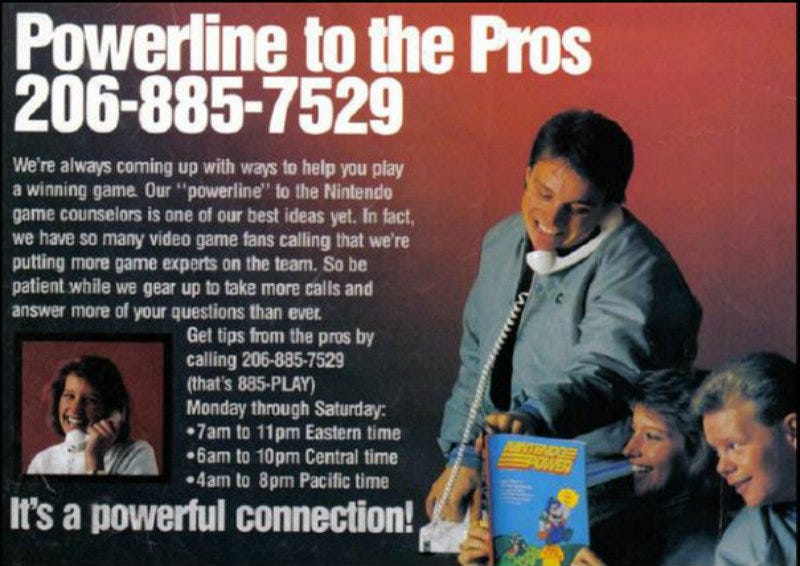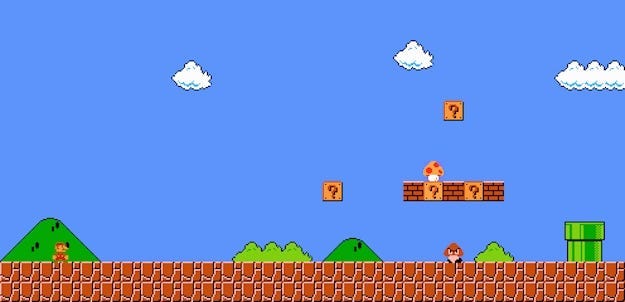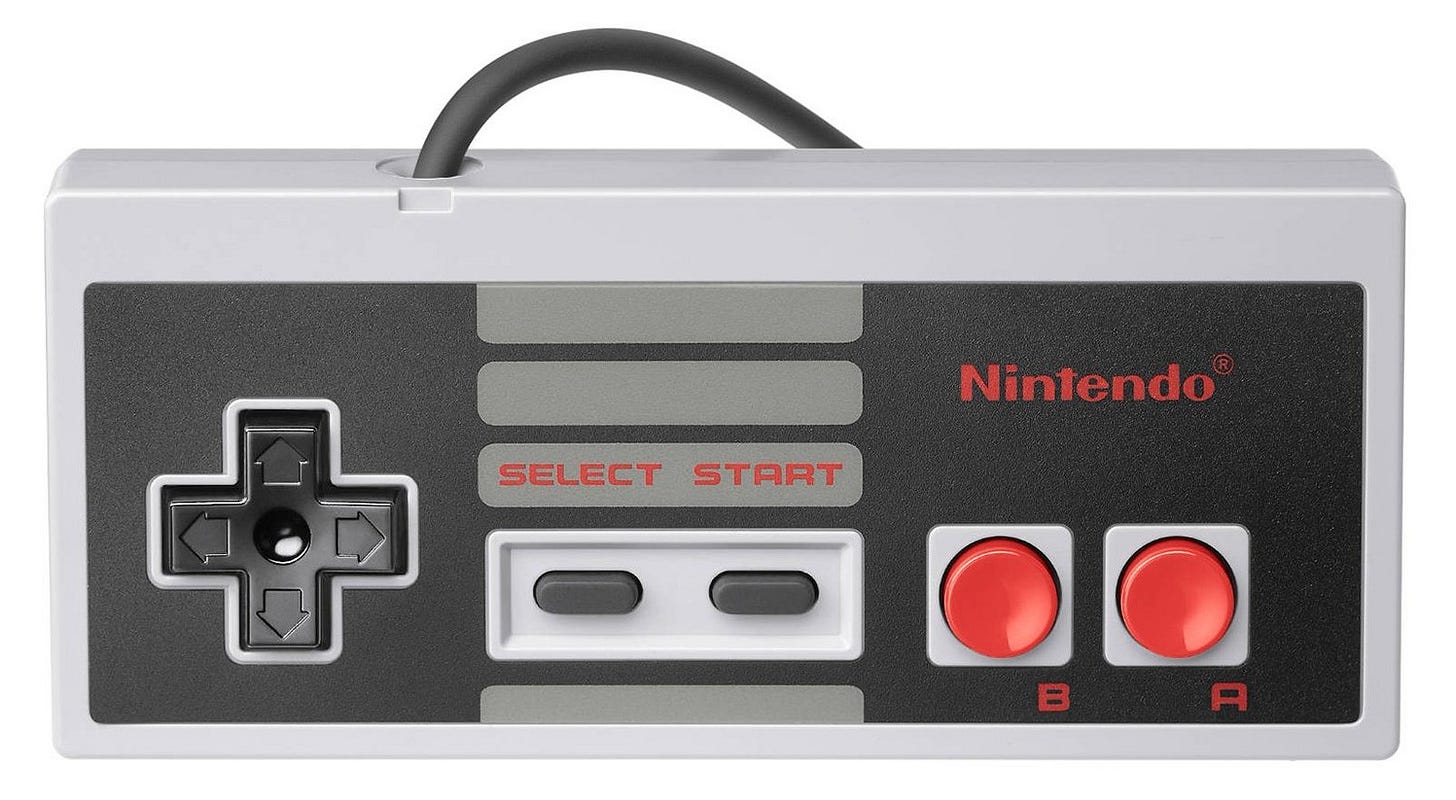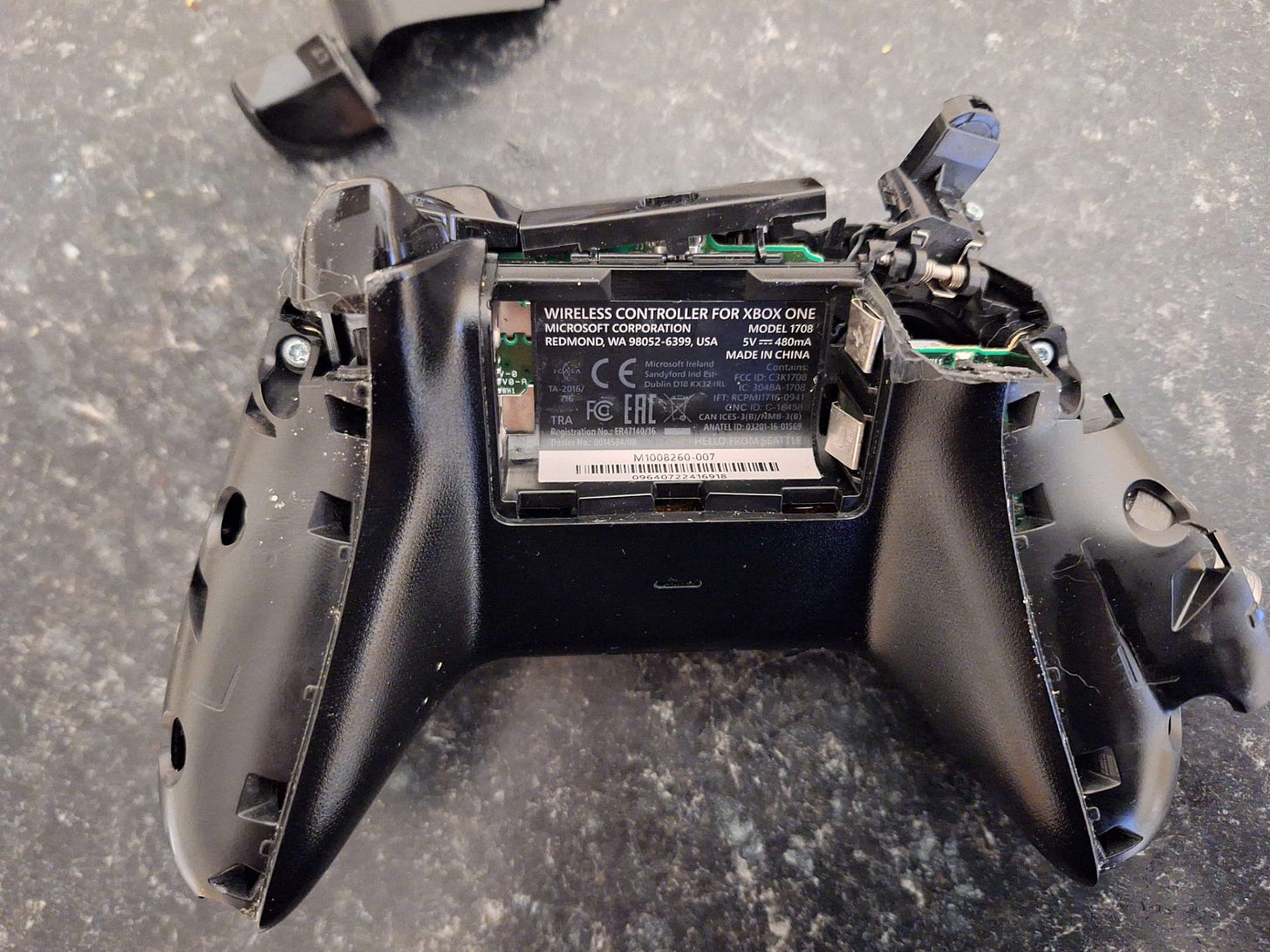There Are No Hard Games, Just Bad Teaching
Difficulty, the easy-mode debate and challenge from the point of view of an experienced gamer
What’s the hardest video game you’ve ever played?
For me, I’d probably choose Castlevania: Rondo of Blood. The game has just 9 required stages, each maybe 10 minutes long and capped off with a boss battle but this monstrous beast took me 2 weeks during lockdown: every day with 4+ hours of play in order to finally beat it.
In recent years, particularly after the release of Dark Souls 2 in 2014: what I would consider to be the first Triple-A Souls-like, the topic of difficulty in video games has become a massive talking point and one I’ve long been meaning to write about myself. I have to admit, I’ve not always had kind words to say on the topic. When the debate first came up, I had already been gaming since I was 4 years old; as long as I’ve been able to walk I’ve been playing video games. Even as a teen, I had beaten Dark Souls and its sequel. In my dickhead teenage years, I was a ‘git-gudder but as I matured and especially as I got into retro gaming I’ve gained some perspective on the matter.
This post was inspired by a very enjoyable conversation I recently had with
over in her comments section.In the paragraphs ahead I’m going to be discussing different approaches to difficulty, the ways in which games tend to be challenging and why I think that ultimately, more effective tutorials and on-boarding would solve these issues once and for all. Now, I’m not an academic or a game developer or anything like that, so don’t take my words as some deep study or bit of research, this is just the way I see things after a (short) lifetime of engaging with this medium.
I hope you enjoy.
A true gaming artefact. My first video game console: the Gameboy Advance SP, though battered has survived with me since 2004.
The Models of Difficulty
I’m going to begin this post by listing what I consider to be the models of video game difficulty, please bear in mind these definitions are quite loose and in most modern, complex video games, they intersect. For example, I’d label Doom Eternal to be a Mechanical-Reflex difficulty type and most fighting games to be a Competitive-Reflex-Strategic type of difficulty.
The first kind of video game difficulty I’d like to cover is what I’m going to call the Classic Model.
Classic Model
This type of difficulty is typical of arcade games, games for the consoles from the 80’s like the NES and more recently, its DNA somewhat lives on in modern Rogue-likes. Classic Model difficulty is usually characterised by a harsh or non-existent way of retaining game progress, a lives system, a focus on memorisation over mechanical skill to overcome challenges, short game length or a focus on attaining a high score, simple gameplay and a reliance on external methods of teaching like manuals or controls printed onto an arcade cabinet.
Mechanical Model
Next we have the Mechanical Model of difficulty and this one is quite broad but I believe Metroidvanias embody it well along with Zelda games and classic arena shooters. This kind of difficulty is all about giving the player an arsenal of abilities, game mechanics or weapons and creating difficult problems to solve using that toolbox, this could be using the right combination of projectiles against an enemy, or utilising the game’s physics engine to solve a puzzle, or using your new double jump and dash ability to pass through a hazardous corridor.
Reflex Model
The Reflex Model of difficulty is all about creating challenge through quick reflexes, high-execution button inputs in quick order or challenging the player’s ability to control their character precisely. FPS games are perhaps the poster boy for this kind of difficulty but I’d put rhythm games and Shoot ‘Em Ups in there too. With the Reflex Model you might have to mash a button, remember complex combos or quickly react to an enemy player sprinting around the corner.
Competitive Model
Competitive Model difficulty is perhaps the most challenging one on this list because the basis of it is that human players are always more challenging to face than the AI. Fighting games spring to mind when I think of this difficulty model, along with any E-Sport you can think of.
Persistence Model
The Persistence Model is what I would consider the grind: games where you need to seek out better equipment, reach a higher level or gather more crafting materials and perks to get past an obstacle. Western RPG’s embody this a little more than Japanese ones in my opinion, or though they both share it and most MMO’s and looter-shooters have this difficulty style.
Strategic Model
Finally we have the Strategic Model and this one rewards the player for extensive knowledge of deep mechanics, on the fly calculations and the ability to micro-manage and sort out logistical and numerical challenges. Obviously, strategy games are prototypical of this kind of challenge but I’d also put puzzle games and a lot of JRPG’s under this category.
Part of why I wanted to narrow down some categories for difficulty is because the ‘hard’ game label has always bothered me: for some people it means absolutely nothing and for others it can be a barrier, I’ve had friends who were too intimidated to even begin learning a game due to its reputation. The truth is that a game is usually only hard if you lack experience in the genre or if it fails to teach the player the necessary skills. For example, I was playing Xenoblade Chronicles X earlier this year and I found that game really tough because I’m a complete noob at JRPG’s and at the same time, I know a couple of people who really struggled with Hollow Knight but I’ve played a lot of retro 2D platformers and older Metroidvania games so for me, the difficulty was relatively mild.
Practice makes perfect.
It’s an age-old saying and it applies to video games too; the player who has finished Super Mario Bros. Super Mario Bros. 2 and The Lost Levels is going to do better at say, Super Mario Bros. Wonder than somebody who has never played a platformer.
I also want to add that I think everyone’s tolerance for different difficulty styles varies. I really enjoy a game that is Strategically or Mechanically challenging. I have thousands of hours in the Paradox Grand Strategy games but the moment I come up against any sort of grind, or hit a main quest where the game wants me to advance 5 levels before I embark, I just lose all interest in playing.
I’m not saying that my way of looking at difficulty is the correct way, the only way or should be your way of looking at it but I do think, given how difficulty of consumption is a characteristic so specific to video games as a piece of entertainment, that something like a difficulty rating system wouldn’t be a bad idea to put on video game boxes in the future. Our age rating system in the UK: PEGI uses descriptors like ‘Drug Use’ and ‘Bad Language’ alongside the recommended age to convey the content of a video game, what if we could also give games a difficulty rating with descriptors like ‘Precision Platforming’, ‘Online Opponents’ or ‘Limited Healing Items?’
Collaboration = Domination
I take an optimistic view on difficulty and player skill. While I think natural ability and inclination exist I also believe that given the right materials, mentorship and with a dash of confidence most people will be able to learn how to do most things and this extends to playing hard video games. I’ve seen it first hand. How many times have you introduced a friend to a video game and they’ve gotten stuck or not understood a mechanic? You’ve probably given them a piece or advice or demonstrated it in a way that turned that bulb on and allowed them to keep playing, this has happened to me too.
What a lot of older gamers don’t mention and what newer gamers have missed out on is that these used to be core-experiences of gaming in the pre-online era.
All of these (and excuse my stereotyping here) 40+ year old, gatekeeping, bearded Nintendo men complaining about save-states, rewinding emulators and telling people to git-gud ignore the fact that pre-internet gaming was an inherently collaborative experience. In the arcade, players would crowd around machines trying to get high scores or to finish the game and if you saw someone better than you play, you were learning by watching them even if you didn’t know it; if they weren’t unpleasant, they could also pass some of their tips and tricks on to you.
This culture of collaboration carried out of the arcade and into early gaming media, where help was always available. Nintendo Power: the long-running magazine had tips and tricks in every issue for the latest games; every magazine had something like this. Nintendo of America even had a hotline where you could ring them up and ask for help.
Anecdotally, growing up around the PS2, Gamecube and original Xbox, before online gaming on consoles had really taken off, if you had a hard game then you handed the controller to an older sibling or you invited a friend over. I remember me and my best friend in primary school (elementary school for the Atlantically challenged) playing Star Wars Rogue Squadron 2: Rogue Leader on the Gamecube all day and still not being able to get past where I was stuck.
The resources have changed: magazines and tips and tricks have been replaced by Reddit, forums and YouTube, the Nintendo Powerline has been replaced by hopping onto a game’s Discord but gaming tips and advice can always be found, only, the attitudes of those who relied on them most, has only grown more pompous. Yes, Gary, you beat Super Mario Bros. all by yourself as a kid, you, your older brother, your copy of Nintendo Power, the Warp Pipe you definitely didn’t use and the infinite lives you definitely didn’t acquire by trapping a Koopa Shell.
Bashing your head against a wall with a hard game and refusing to look up any advice is like eating soup with a fork for dinner while everyone else uses a spoon.
The Allure of Hard Video-Games
So far, this has been quite a one-sided article in favour of categorising and to some degree, mitigated video game difficulty for the player but I do want to recognise that challenge is an essential part of video games, because a game that is too easy is almost always a boring experience. I also understand the people who purposefully seek out challenging video-games… because I’m one of them.
I want hard video games and the medium in general to have better tutorials because I want more people to be able to access and get the feeling of achievement from overcoming a hard game.
There’s nothing like playing a really hard level or boss fight, making 10 attempts, 15 attempts, 20… and then it all clicks. You work out that attack you can’t dodge, you memorise that pattern or you realise the inputs you’re supposed to make, time seems to slow down and you execute it flawlessly. You get that rush of relief and excitement at finally getting past and looking forward to what the rest of the game might hold.
But most video games teach you how to play by talking at you, listing controls and then introducing mechanics with the most obvious, barebones examples without any kind of hint to further use, so how is anyone who hasn’t been gaming for 10+ years supposed to get very far without a pinch of abject misery?
The Best Teachers
So, what actually is a good tutorial? And how can we make more of them?
For my example, I’m going to go back to the past, for a tutorial I think everyone has played at least once, even if they didn’t realise it.
This is the beginning of World 1-1 in Super Mario Bros.
And this is an NES controller
Without a single word, you are taught everything you need to know in order to play the game.
Firstly, the player is given a bit of space before the oncoming Goomba arrives, walking along the floor. This gives you the opportunity to get a feel for Mario’s movement, see what Start and Select do and crucially: realise that up on the D-pad is not jump, which wasn’t uncommon back then; the player should at this point realise that B sprints and A is the correct jump button too. With that, you can jump straight over the Goomba and to safety.
Super Mario Bros. has just taught you the controls, that Goombas will always move left and cannot jump and if you jumped on it: how to defeat every enemy in the game besides Bowser and all in a few moments! I could take this further: the item boxes glimmer at you, begging to be hit and the player is rewarded with a mushroom: quite the rare commodity in this original entry, if they realise you have to hit the boxes from below but for now? I’ll leave that.
The freedom to experiment without dire consequences, a manageable obstacle to overcome and the option to experiment with these newfound abilities: that’s how you teach the player.
A Word of Encouragement
Something struck me when I read
’s article the other day: a lot of people, even if only a little bit, have some insecurity about their skill as a gamer. I don’t know any other gamers in my life and most of the online circles I consume content from are experienced gamers, so this phenomenon really took me by surprise.The first thing I would say if you get this feeling is that being good at games is just a by-product of having played a lot of them, very few people in gaming outside of speed runners, fighting game players or related niche cases will sit down with the aim of getting good at a game, it just… happens. You don’t need to worry about how you measure up against other players, just play more games more often and you’ll get there.
But… it doesn’t matter.
One day, you might find a game that’s brutally difficult that you love and you’ll feel that motivation to improve and fight your way through it, that game for a whole generation was Dark Souls, earlier it was Castlevania and in-future I’m sure another game with a similar reputation will arrive but you don’t need to stress about being good. There’s nobody looming over your shoulder demanding that you win, there’s no monetary prize if you manage to beat Ornstein and Smough in Anor Londo, the game just goes on.
It’s okay to take breaks and it’s okay to drop a game that’s too difficult for a later time. Sometimes, you’ll even wish you had done it earlier…
I can’t play online fighting games anymore because my controllers end up like this.
A bit of unstructured post today but I hope you enjoyed. Be sure to like the post and please consider Subscribing for more or donating to Scanlines’ Journal for as little as £1.











This is one of the best posts I’ve read from you so far. Truly outstanding work!
What really stood out to me was how clearly you categorized each type of difficulty, and how you connected that with how a player’s background and preferred genre can shape their perception of challenge.
In the end, you made me see some of my favorite games that could be considered hard-as-nails from a whole new angle.
Keep up the great work!
What an wonderfully presented and balanced take on video game difficulty. Awesome work!
Also, I've only ever completed Rondo of Blood while playing as Maria - which is significantly easier than Richter hahaha